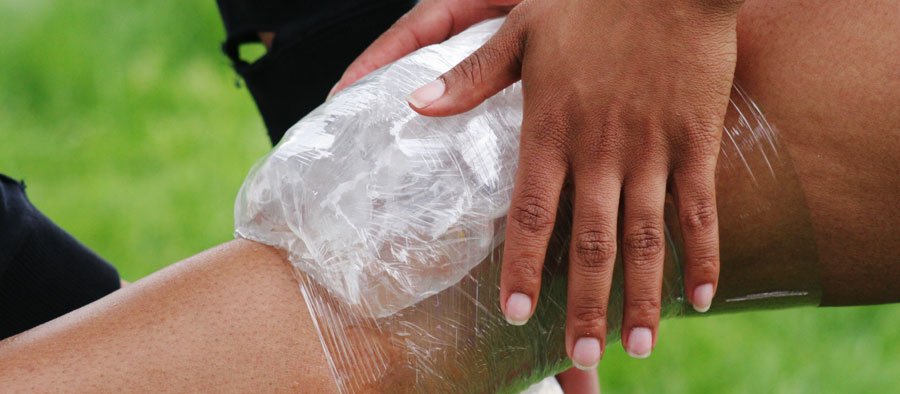When you’re active and on the go, it is easy to push your limits and end up accidentally injuring yourself. If you are a sports person, you are even more likely to experience this and if it is not treated properly you can find yourself with a lifelong injury. One of the most effective ways to treat a sports injury, especially one that has caused swelling, is to ice the injury. Here are 5 tips for you to take on board when icing your injury.
-
Use R.I.C.E
One of the first and easiest things is to remember the acronym R.I.C.E when you injure yourself:
- Rest – avoid strenuous activities that place stress on the injured area
- Ice – apply ice to the area as soon as you can, it is most effective within the first 24-72 hours after which you should transition to heat therapy
- Compression – support the injury and minimize swelling by using a compression wrap on the injury like an elastic bandage
- Elevation – raise the injured area above the level of your heart to prevent fluid pooling
“This simple and easy-to-remember acronym can be a great way to remind yourself of the basics when an injury happens and you’re in that initial stage of shock or distress,” says Mary Bell a lifestyle writer for Originwritings and Britstudent.
-
Protect Your Skin
Keep an eye on the clock and protect your skin when you are icing. Try and keep icing sessions to 10-20 minutes in length to avoid damaging your skin or the tissues underneath. Avoid direct contact with the ice by placing a towel, cloth, or another barrier between you and it. If you notice the skin becoming blotchy, raised, and red after you ice stop immediately. If you’re dealing with skin that has muscle spasms, open wounds, or a lack of sensation, don’t ice as you could actually injure yourself further.
-
Allow Time Between Treatments
“Protecting the skin in the moment and timing sessions are useful, but all that good work can be undone if you don’t allow yourself time between treatments,” warns health blogger Darrell Boyd, Write My X and 1Day2Write. After your 10-20-minute icing session, you need to allow the area to return to normal sensation and be warm to the touch before you ice again. It’s advised you take 45 minutes to an hour between sessions and if the skin is still not warm to the touch you should not continue to ice.
-
Use What Ice Method You Have Available
The market is full of commercial icing products claiming a large array of benefits as to why you should pick them. While these can be useful if they are designed to conform to parts of the body or allow for reuse, there are still a few DIY methods to consider if you don’t have any on hand or cannot afford them. The first is the basic and traditional method of filling a re-sealable bag with either ice cubes or crushed ice. To make it mold to an area more effectively you can add a little water. You could keep paper cups filled with ice in your freezer in order to provide you with a great massage tool that allows you to effectively massage the ice in a circular pattern over the injury. Finally, there’s the good old bag of frozen peas or other such items. It’s a classic for a reason, most of us have something like that on hand making it an easy go-to. If you do use frozen food, however, you should not return it to your freezer and definitely shouldn’t eat the defrosted food.
-
Summary
When it comes to icing an injury the important things to keep in mind is the R.I.C.E. acronym to ensure it is an effective treatment, keeping your skin protected and watching for any signs of tissue damage, taking breaks between your treatments, and choosing an icing method that is available to you. If your injury is serious or does not seem to be improving you should seek medical attention immediately. Hopefully, however, this will provide you with some quick first aid to help you deal with an injury and allow you to accurately assess the extent of the damage.
Business development manager George J. Newton, Write My Personal Statement and PhD Kingdom, has been married for 10 years and perfected the art of the apology throughout. When not working on this skill he writes for Next Coursework.


